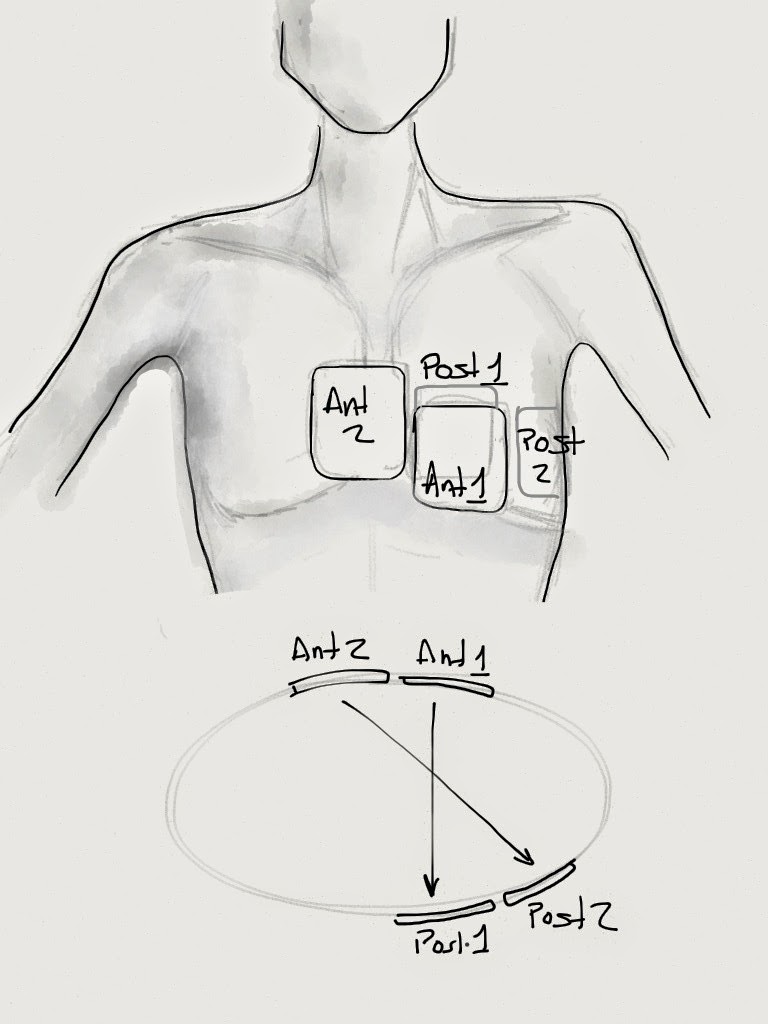

When he arrived at the ED, his blood pressure was 114/71 mm Hg, heart rate was 91 beats per minute, respiratory rate was 20 breaths per minute, and body temperature was 36.0☌. He experienced chest heaviness with shortness of breath and broke out in a cold sweat but did not have radiating pains. The pain had started 50 minutes prior to his visit, as he was going to sleep. CASE REPORT A 51-year-old man visited the emergency department (ED) with chest pain. To our knowledge, this is the first case to implement DSD for terminating refractory VF in IHCA. We report one case of refractory VF that occurred in the hospital and did not respond to standard defibrillation but was successfully treated with DSD. There are no current reports of DSD to terminate refractory VF in IHCA.

To date, all existing studies have been conducted on OHCA, most of which were performed by emergency medical technicians at the pre-hospital level. There are multiple techniques for delivering the shock for DSD and allow a delay of 1–2 seconds between sequential shocks or administer shocks almost simultaneously. Two defibrillators are manually activated at their maximum energy setting. The DSD approach uses two sets of defibrillation pads, one for the anterior-apical (AA) area and the other for the anterior-posterior (AP) area ( Figure 1).

Double sequence defibrillation (DSD) is an effective treatment for refractory VF. To date, several methods have been implemented to treat refractory VF, although there is no gold standard of treatment. However, there is currently no clear definition of refractory VF, and the term is typically used for cases where VF does not respond to three consecutive defibrillations. For refractory VF that does not respond to defibrillation, the survival rate is low and the neurologic outcome is poor. When ventricular fibrillation (VF) or pulseless ventricular tachycardia is the initial rhythm, survival rates and neurologic outcomes are better in both out-of-hospital cardiac arrest (OHCA) and in-hospital cardiac arrest (IHCA) cases. Keywords: advanced cardiac life support defibrillators survival rate ventricular fibrillation.Therefore, DSD could be an option for treatment and termination of RVF. The patient returned to spontaneous circulation and was discharged with cerebral performance category 1 after 14 days of hospital admission. Two rounds of DSD were performed by placing additional pads on the patient’s anterior-posterior areas and sequentially applying the maximum energy setting. Although 10 defibrillations were administered over 20 minutes, there was no response. The initial electrocardiography showed markedly elevated ST-segment on V1–V5 leads, and VF arrest occurred. A 51-year-old man visited the emergency department with chest pain. We report a case of RVF that was successfully resuscitated with double sequence defibrillation (DSD). However, the mortality rate increases when refractory ventricular fibrillation (RVF) occurs. In cardiac arrest, if the initial rhythm is ventricular fibrillation (VF) or pulseless ventricular tachycardia, the survival rates are high and good neurologic outcomes are expected.


 0 kommentar(er)
0 kommentar(er)
